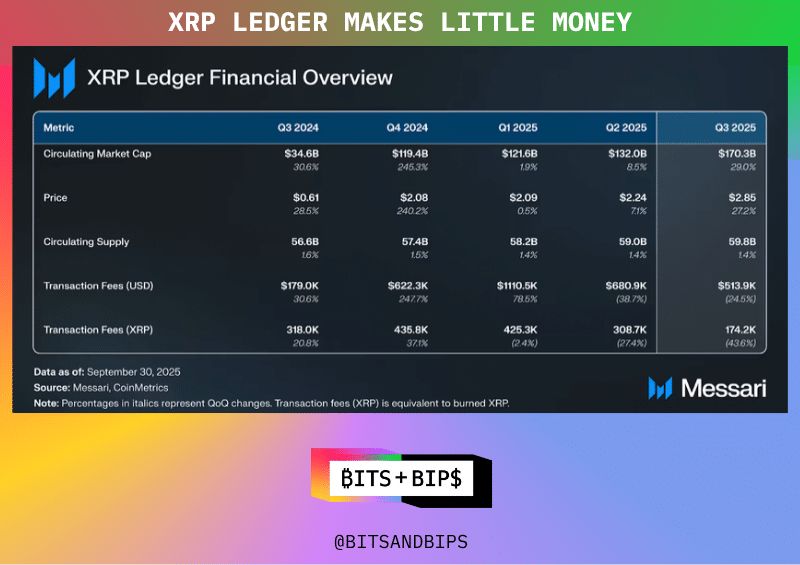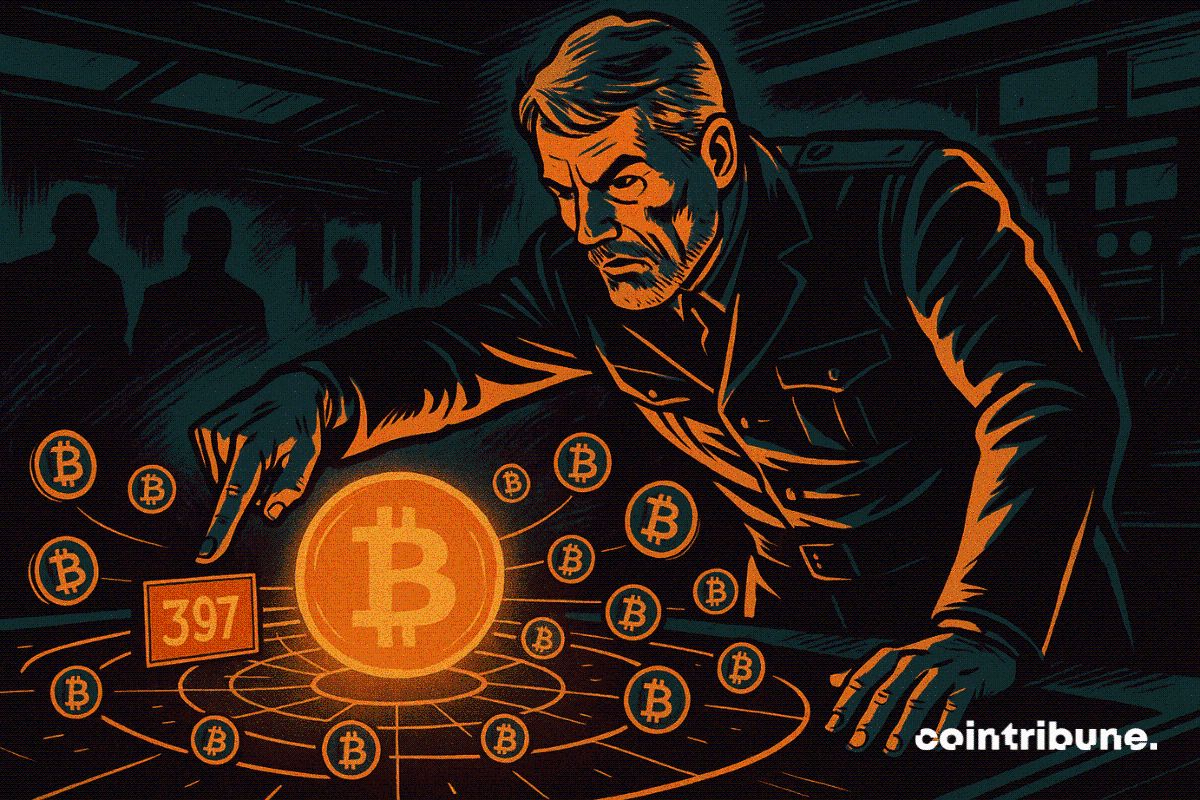Under the "Trump Promise" vision, does TON still have hope for growth?
After Trump's election victory, the price of Bitcoin surpassed 76,000, drawing market attention to the growth of altcoins. The TON ecosystem entered a period of adjustment following Durov's Paris event. Although market enthusiasm has declined, TON still has long-term growth potential. TON needs to optimize its DEX and DeFi features to attract more users and liquidity. In the future, the diversity and maturity of the TON ecosystem will be key to its development. Summary generated by Mars AI. The accuracy and completeness of the content generated by the Mars AI model are still being improved through iterative updates.
After Trump's election victory, Bitcoin broke through 76,000, with a strong bullish pattern prevailing. However, compared to Bitcoin's price movement, what is most beneficial for the overall industry ecosystem growth is the altcoin season—the industry is looking forward to more diverse growth. In the short term, we can see that tokens in various sectors are already following the market's renewed enthusiasm. Among these trending sectors, the "TON ecosystem" continues to attract close attention from investors.
Since the Durov Paris incident two months ago, the TON ecosystem has fallen into crisis, or rather entered a new adjustment phase. Even though various Meme projects and mini-game projects within the ecosystem are still constantly attracting new users and updating activity information, market-sensitive participants seem to have already sensed the "limited faith" in the TON ecosystem.
For example, from the market feedback, SOL has already followed BTC in a rapid rebound, breaking through 200, but TON's increase is far less than this.
So, for TON, what is the most favorable aspect in this industry-focused election event? Some answers can be found in Trump's ten commitments to cryptocurrency. In these commitments, we see not only measures for Bitcoin, but more importantly, actions that will represent the "unblocking" of the cryptocurrency industry by the US dollar economy in the future. For Telegram and TON, which have long been shrouded in uncertainty, this will be a strong boost.
With such a smooth background expectation, if the market continues to rise, what specific development expectations can we still have for TON?
Favorable Development Background for TON
Before Durov's news, the growth of the TON ecosystem was strong. With the several-fold increase in the TON token, most ecosystem DeFi tokens rose by about 10 times. In addition to token price increases, attention was even more remarkable. First, before Notcoin went live, various CEXs scrambled to list it to attract new TON ecosystem users. Then, DOGS once again mobilized the enthusiasm of all Telegram users. These all represent a huge market base, and as long as the market rebounds, the rebound of tokens in the TON ecosystem is bound to follow.
However, in the past two months of downturn, after the decline of the TON token, the TVL and DEX trading volume within the ecosystem have also decreased with the cooling enthusiasm. This is currently the most noteworthy data.
But when we understand TON from the perspective of long-term public chain growth, we may find that the current data performance is the kind of data that inevitably appears in the growth process of a public chain with each cycle. This first allows us not to worry about TON losing its position in future public chain competition, but rather to continue to view TON with a long-term perspective.
Just like the development trend of DEX, the entire industry's user education is laying the groundwork for high-speed public chains like TON.
On October 28, according to SolanaFloor, Solana DEX trading volume reached $15.78 billion during the week, 77.91% higher than Ethereum's $8.87 billion, setting the largest lead over Ethereum ever. As a result, Solana's share of total chain DEX trading volume reached 35%, a record high.
At the same time, according to The Block and DefiLlama data, in October, the share of DEX spot trading volume relative to CEX reached 14.12%, the highest since May 2023.
Such a trend continues to confirm one thing: with the popularity of high-speed chains, the boundary between user trading behavior on DEX and CEX is becoming increasingly blurred.
Under the multiple trends of mature on-chain liquidity supply, on-chain token market cap management, and the prevalence of small and medium-sized projects, and with user trading scenarios becoming increasingly blurred, we will eventually see user behavior shift: more trading and interaction behaviors will return to native on-chain trading and exchanges, or trading behaviors mainly based on DEX and Web3-style interactions.
Compared to the current infrastructure hotspots on various chains, TON itself is an ecosystem where the boundary between DEX and CEX is even more blurred. Its Web2 interaction method first blurs the trading category, and the TON wallet on Telegram further lowers the entry barrier for native Web3 trading to Web2, meaning simpler and more convenient native on-chain trading, or possibly even surpassing the convenience currently achieved on Solana.
We can imagine that in the Solana environment, excellent DEXs can achieve explosive trading volume growth in a short period. For example, Dune data shows that the total trading volume of Jupiter, a DEX aggregator in the Solana ecosystem, is close to $334 billion, while it took Uniswap several times longer to reach tens of billions of dollars.
In addition, the token price of Raydium, the most active DEX on Solana recently, has performed exceptionally well. Even as BTC, ETH, and most altcoins have pulled back, its price has remained on an upward trend, fully proving the stable advantages that DEX and DeFi themselves can have amid price fluctuations.
Such a development path is already in place for TON in terms of infrastructure and development ideas—what's missing is just a spark.
The Growth History of Public Chains
TON was already very impressive at the start of this cycle. But in today's unclear cycle rotation, it is difficult for TON to have the time advantage and external momentum that Ethereum and Solana once had. Playing it safe, maintaining sound infrastructure, and being ready to seize opportunities at any time still seems to be TON's main theme—just as TON quietly prepared for a year for the 2024 cycle. Tracing the growth of Ethereum and Solana can reveal a clear development path for TON.
First, for the economic model of a public chain to enter a positive cycle, the core is the continuous occurrence of transactions, representing all possible on-chain interaction behaviors.
On Ethereum and Solana, DEX and DeFi behaviors dominate, all brought about by users using DApps. Therefore, a development approach that brings rich and diversified application types to the ecosystem is suitable for TON.
In summary, both Ethereum and Solana have gone through these steps:
1. Rapid Increase in the Number of Ecosystem Project Token TGEs
Simply put, during a good cycle, a large number of ecosystem projects issue tokens and go live on DEX, or DeFi can start business.
Ethereum entered this stage in 2018, and before DeFi Summer, it became a full-blown wave. This included the emergence of Uniswap, various wallet applications, major EVM projects, DEX, DeFi successively issuing tokens to stimulate business growth, etc.
Solana emerged as an Ethereum challenger during DeFi Summer. In the early days, the foundation promoted a large number of project TGEs. Even though the chain was not yet mature and on-chain interactions were few, Solana's stimulus to the ecosystem continued, and even the impact of the SBF incident did not completely halt it.
At the start of this cycle, the number of tokens in the TON ecosystem surged, and the popularity and price increases of tokens were also impressive, much like the corresponding stages of Ethereum and Solana.
2. Growth of DeFi TVL
After a large number of ecosystem project token TGEs, the most direct impact is TVL. Native applications on public chains are all related to token trading, and DeFi accounts for more than 90%. Listing tokens on DEX and starting DeFi business will both bring in locked funds, so TVL data is the second inevitable data point for public chain growth.
Every token listed on a DEX must add a trading pool, which is often the first locked fund. If interacting with DeFi businesses such as lending or depositing coins, token staking will inevitably occur, which is the second basic action for TVL growth. Incentives for this action include token airdrops, mining, and interest from depositing coins, etc.
During DeFi Summer, Ethereum was stimulated by both TGE and DeFi token price surges, and TVL grew by about 100 times. Later, as prices rose, TVL soared again. Solana's growth in this area came from the ecosystem's heat in 2023 and the airdrops and TGEs of ecosystem projects in 2024.
In the past six months, TON's TVL rose to $700 million but began to pull back before breaking $800 million. This is the result of a retreat in ecosystem heat, and like Ethereum and Solana, after the first growth, it needs to return to enriching ecosystem application projects. Both Ethereum and Solana took another two years—how long will it take for TON?
3. Accumulation of DEX and DeFi Diversity
Ethereum and Solana both spent two years accumulating diversity—one during the bear market winter of 2018, the other after the heat receded post-DeFi Summer.
During this stage, Uniswap V1 matured on Ethereum, MakerDAO and AAVE emerged, Curve and Compound started, and Sushiswap quickly followed. Farm-type mining projects appeared one after another. These projects all contributed to the maturity of DEX and DeFi. By the second round of application development, Uniswap and other DEX had iterated at least two versions, and AAVE and other DeFi had expanded from single chains to almost all EVM chains.
During Solana's accumulation, DEXs like Raydium and Jupiter appeared, as well as a large number of DeFi projects staking SOL tokens. The maturity of these applications is necessary, as it allows users to use services more conveniently and securely locks users' real funds on the public chain.
TON's maturity is still early; currently, DEX functions are relatively simple, and there are few DeFi projects. The first step before an explosive opportunity is to increase the diversity and maturity of DeFi.
The First Step in TON's Growth
In the past year, TON experienced its first growth in the number of ecosystem project tokens, with a large number of tokens and small to medium-sized projects starting listings, airdrops, and IEOs. TVL then grew rapidly, but after this round of TVL and price declines, enthusiasm dropped, and ecosystem projects were affected as a result. In the future, trust needs to be rebuilt. At such times, it is even more necessary to provide practical help for ecosystem diversification, that is, to mature DEX and DeFi.
In reality, TON is currently at this stage, which is also the first step in TON's growth.
What we can see is that the DEXs of Ethereum and Solana have become very mature through the cycle, so what is the current situation of TON? How much is the gap, and where is it?
TON's performance and capacity are the only ones among all current public chains that can stand shoulder to shoulder with Solana, but the DEXs in the TON ecosystem do not match this strength.
Telegram has a built-in centralized trading pool to complete stablecoin and TON deposits, and then complete the exchange between TON and other tokens. The user experience is the same as instant swaps on CEX. This function is the first feature of Telegram Wallet. The second feature is interacting with the TON public chain wallet TONSpace, which is basically the same experience as using MetaMask on PC or mobile. If you need to exchange tokens, STON and Dedust are more commonly used within the ecosystem, but their functions are basically similar to Uniswap V1.
This reflects TON's shortcomings in DEX. If Telegram Wallet provides the CEX experience, TONSpace and DEX can interact on PC and mobile, and Telegram's MiniApp and Bot can also serve as trading frontends for DEX or CEX functions. These designs optimize the trading experience, but the back-end on-chain native interaction part is obviously lagging behind.
If DEXs on Solana and Ethereum could only provide simple AMM pools and Uniswap V1-like swap capabilities, the business diversity of DeFi on Ethereum and Solana would be reduced by at least 50%.
On Ethereum, most DeFi extends financial scenarios beyond DEX functions. After Uniswap iterated the design of LPs in AMM, DeFi on Ethereum had more new businesses or directly copied business models (based on liquidity mining, deposit interest, upgraded to multi-liquidity pool arbitrage, etc.). The same is true on Solana. In DEX, being an LP and acting as an advanced liquidity provider on specialized liquidity platforms is now one of the best options for asset holders.
Therefore, from a project development perspective, for DEXs on high-speed blockchains, it is important to provide trading liquidity or modularize trading functions, making liquidity advantages the reason users choose them.
For trading on TON, the front-end entry will definitely exist in large numbers within Telegram. DEXs still need to increase business refinement like Jupiter and Balancer, achieving balance for all users, whether they are users, token providers, liquidity providers, or platform developers—each role needs certain refined functions to cooperate.
Compared to DEXs like Uniswap, Balancer, and Jupiter, the development direction for DEXs on TON to supplement DEX or DeFi functions has become an inevitable trend.
Currently, the known on-chain trading middleware project LayerPixel has already launched the first step in DEX function improvement, PixelSwap, based on Balancer's functionality. For DEXs, airdrops are the fastest way to attract users. In the new round of actions, LayerPixel announced that PixelSwap has already started its airdrop plan, with the TGE for the PIX token set for Q4. Facing the current changes in the TON ecosystem, perhaps PixelSwap can still advance steadily in the short term, just like Raydium.
LayerPixel is a DeFi solution designed for Telegram Mini Apps, enabling seamless integration of DeFi and Telegram Mini Apps. The official description calls it TON's Layer 1.5. It can provide a combination of modular functions including wallet, DEX (multiple trading algorithms) services, oracle, etc. PixelWallet focuses on account abstraction, and Pixacle can provide fast and accurate price data for DApps and smart contracts within the ecosystem.
Pixelswap is a DEX based on weighted pools, consistent with Balancer's functionality, supporting LBP asset issuance. This Dutch auction-style issuance method is suitable for small and medium-sized projects with low FDV. The majority of projects in the Telegram ecosystem are such games/GameFi projects, which is why it can meet the DeFi needs of the TON ecosystem. The LBP asset issuance method makes it easier for small and medium-sized projects to complete token issuance in the early stages and maintain relatively reasonable trading prices.
During periods of rapid development and growth, ordinary DEXs are mainstream, but once a downward trend begins, it is more difficult to make markets for tokens on DEX than on CEX. At this time, more refined designs can achieve win-win results. For the B side, it is more suitable for management and control; for the C side, it makes unofficial LPs on DEX more like mature LPs on centralized exchanges, able to actively ensure capital yields, isolate risks, and stabilize prices.
At this point in time, during the stage of growth pullback, the emergence of such DEXs is just right.
In addition to PixelSwap, liquidity sharing between DEXs on TON and the possible formation of liquidity hedging structures between various DeFi projects also need to be stabilized. Currently, after projects issue tokens, they cannot establish staking mining or multiple types of deposit financial management in most DeFi projects.
One reason for the rapid increase in token lock-up volume on Solana is that lending, staking, and restaking projects are all following hot projects to add pools. For example, Marginfi and Meteora on Solana have actively added token pools for new tokens on Solana. Although most tokens do not have financial returns, the platforms provide incentives such as points or airdrop expectations, prompting investors to deposit large amounts of assets to bet on airdrop expectations. If TON follows suit, it will have the same effect.
In Conclusion
Before the Durov incident, our expectations for TON were very high, but the decline in ecosystem heat has caused both ecosystem projects and investors to suffer. However, this is already a familiar rhythm in the industry. There are always investors whose persistence in projects is surprisingly long-lasting, and no matter when the next ignition opportunity comes—be it in a week or several months—it is time left for builders to enrich the ecosystem.
At this stage of TON, users and projects will gradually realize the differences of new DEXs and new features, or one day discover that a new DEX like PixelSwap has already attracted a large amount of TVL and established many staking pools. This will indicate that the ecosystem is ready for another round of growth, ready to cope with ever-increasing trading volume, the continuous issuance of new projects, and the rapid increase of liquidity pools and liquidity mining.
Disclaimer: The content of this article solely reflects the author's opinion and does not represent the platform in any capacity. This article is not intended to serve as a reference for making investment decisions.
You may also like
Showcasing portfolios, following top influencers, one-click copy trading: When investment communities become the new financial infrastructure
The platforms building this layer of infrastructure are creating a permanent market architecture tailored to the way retail investors operate.

Ripple raised another $500 million—are investors buying $XRP at a discount?
The company raised funds at a valuation of $40 billions, but it already holds $80 billions worth of $XRP.

CoinShares: Net outflow of $1.17 billion from digital asset investment products last week.
Crypto Jumps On Trump’s $2,000 Dividend Announcement

